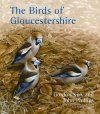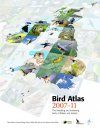Flora / Fauna
By: Gordon Kirk(Author), John Phillips(Author), HRH The Prince Of Wales(Foreword By)
451 pages, colour photos, b/w illustrations, colour distribution maps, colour tables
![The Birds of Gloucestershire The Birds of Gloucestershire]()
Click to have a closer look
About this book
Customer reviews
Related titles
Recommended titles
About this book
This is the most comprehensive account of Gloucestershire's birds ever produced, covering all the species recorded in the county in modern times. There are detailed maps showing the distribution and abundance of over 130 regular species, based on four years of fieldwork carried out by hundreds of volunteers. Graphs, tables and statistics illustrate the patterns of occurrence of many species, including passage migrants and rarities.
Also included are descriptions of the bird habitats and the history of bird watching and conservation in the county. Some of Britain's most prominent bird artists, past and present, including Jackie Garner, Robert Gillmor, Terence Lambert, Peter Partington, Peter Scott and Keith Shackleton, have provided beautiful illustrations, which sit alongside sumptuous photographs of many of the birds and the county's landscapes. The Birds of Gloucestershire includes a Foreword by His Royal Highness the Prince of Wales.
Customer Reviews
Flora / Fauna
By: Gordon Kirk(Author), John Phillips(Author), HRH The Prince Of Wales(Foreword By)
451 pages, colour photos, b/w illustrations, colour distribution maps, colour tables
"This new avifauna covers the current bird-recording area of Gloucestershire (thus excluding the local authority area of South Gloucestershire, which since 1974 has been treated as part of Avon). It is a large-format book, attractive to the eye with its many colour photographs, line-drawings, maps and graphs. The maps were drawn using data from fieldwork for Bird Atlas 2007–11. In Gloucestershire, it was decided to visit all tetrads within the county as part of the atlas fieldwork in the four-year period, and to record all birds in both winter and the breeding season. Every tetrad with at least 50% of its land within Gloucestershire was visited, resulting in a truly comprehensive survey. Rather than produce ‘just’ a local atlas, the organisers decided to include data on all the species recorded in Gloucestershire, making this the definitive compilation of the birds of the county. [...] The Birds of Gloucestershire works well as an avifauna, and is a solid reference on the occurrence of birds in the county. The inclusion of the atlas maps really makes a difference, however, providing much more information than would otherwise have been possible, especially for the regularly occurring species. The maps also provide welcome and prompt feedback to the volunteer fieldworkers. Given the fast turnaround from end of fieldwork to publication – a little over two years – the authors should be congratulated in producing such an attractive reference work."
– Mark Holling, British Birds, 21-04-2014
"[...] This might claim to be the most thorough county avifauna yet published. All species have full historical treatment, without the straitjacket of the 4-year atlas period and most have four distribution maps, in which ‘abundance’ is allotted equal importance with the exact breeding status revealed (at least in theory) by the tetrad visits. [...] One might even question (as I have done before) whether a less elaborate and more affordable work might convey the same information to a wider audience."
– David Ballance, Ibis (2014), 156, 478–489









































